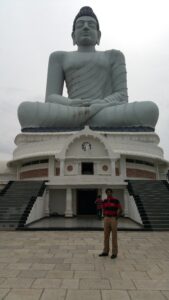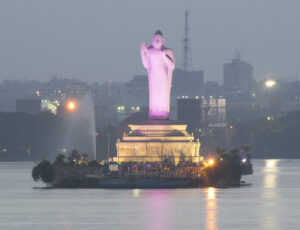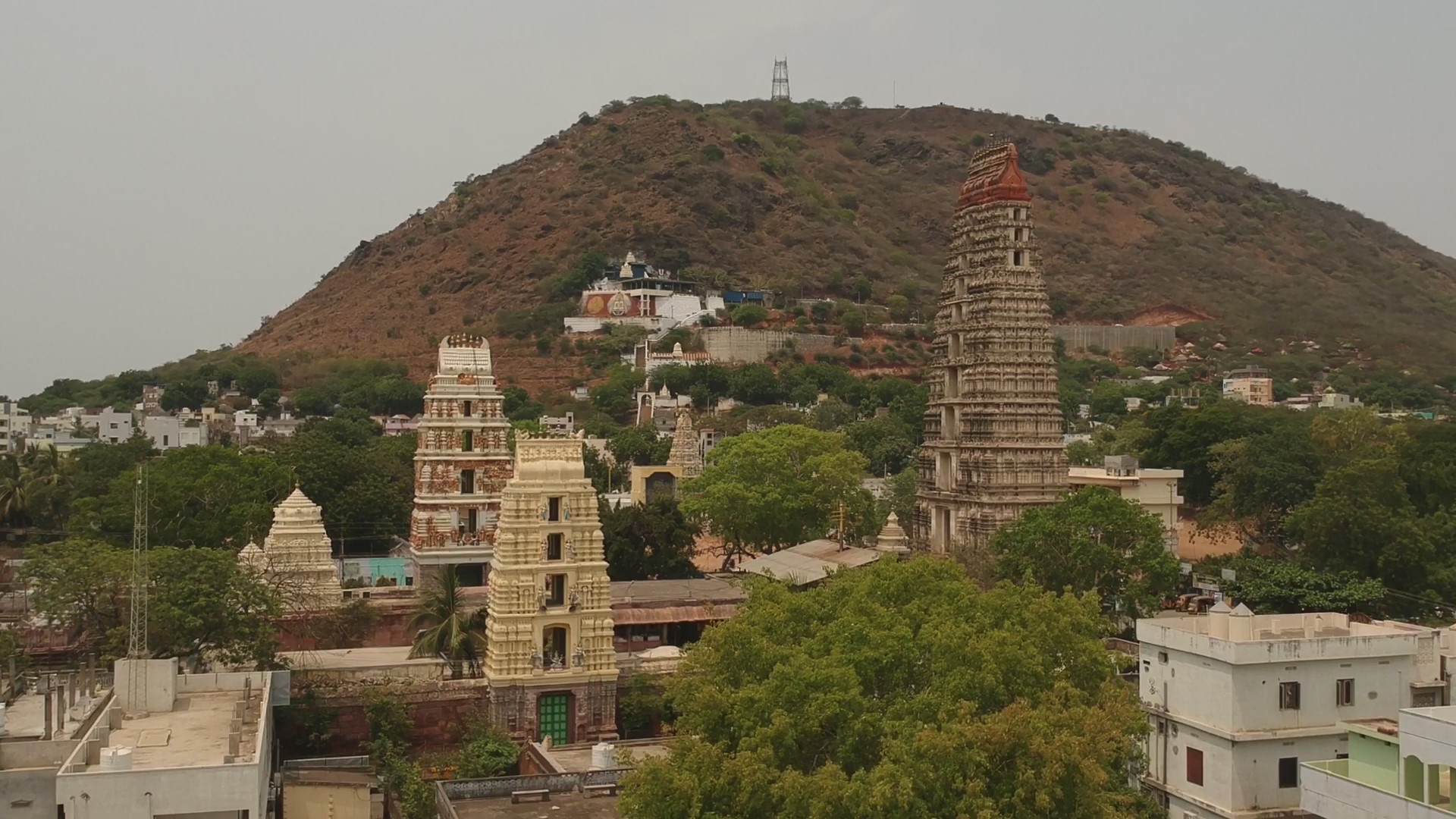
Lakshmi Narasimha Temple is a vaishnavite temple and one of the eight sacred places of Lord Vishnu in India. It is situated at the foot of the Auspicious Hill in Mangalagiri of Guntur district of Andhra Pradesh. It is one of the temple in the series of three temples located on and at the bottom of the hill, the other two being Panakala Narasimha Temple on the hill and Gandala Narasimha Temple at the top of the hill. It has one of the highest gopurams in South India and only one of its type in this part of India. It is 153 feet (47 m) in height and 49 feet (15 m) wide and has eleven storeys

మంగళగిరి శ్రీ లక్ష్మి నరసింహ స్వామి మందిరము ( యెగువ సన్నీధి + దిగువ సన్నిధి)
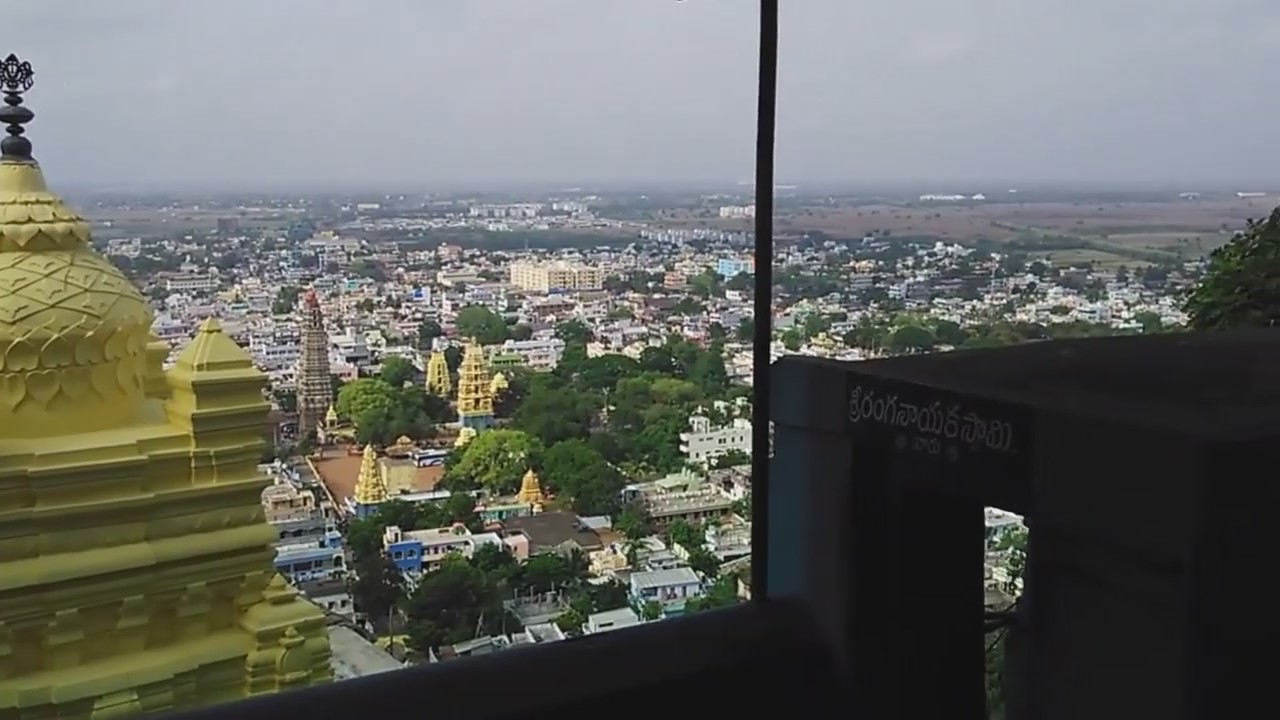
మంగళగిరి శ్రీ లక్ష్మి నరసింహ స్వామి మందిరము (యెగువ సన్నీది నుండి దిగువ సన్నిధి)
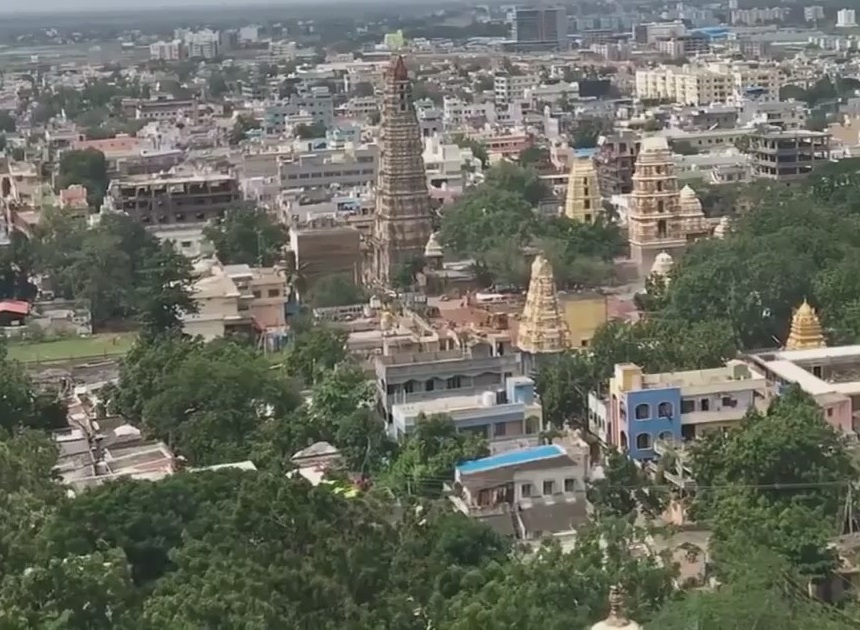
మంగళగిరి శ్రీ లక్ష్మి నరసింహ స్వామి మందిరము (దిగువ సన్నిధి)
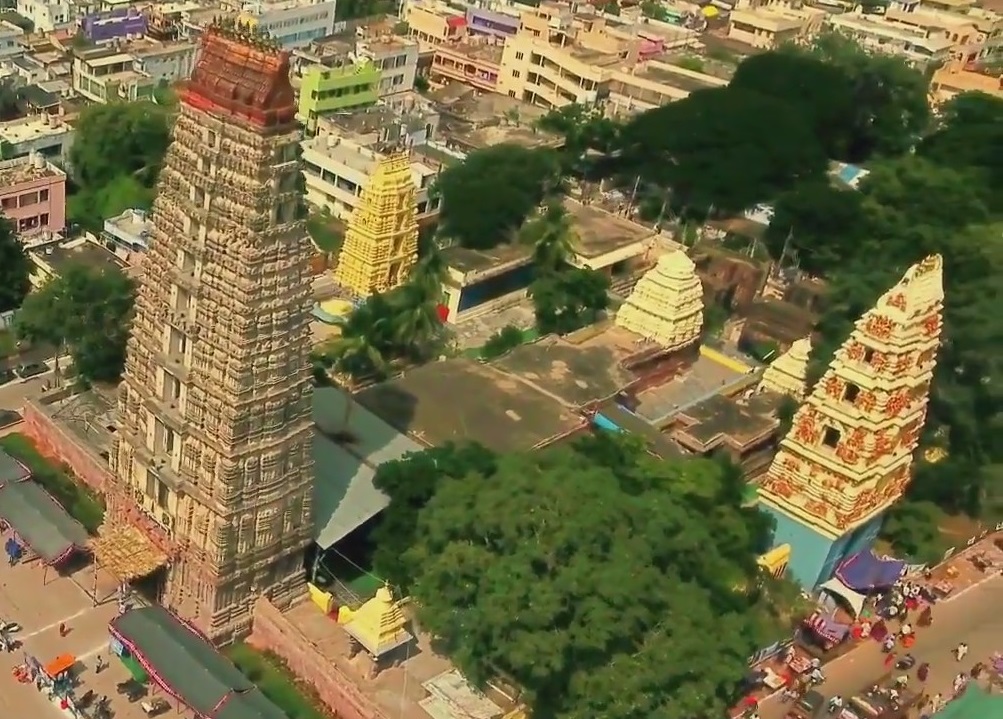
మంగళగిరి శ్రీ లక్ష్మి నరసింహ స్వామి మందిరము (దిగువ సన్నిధి)
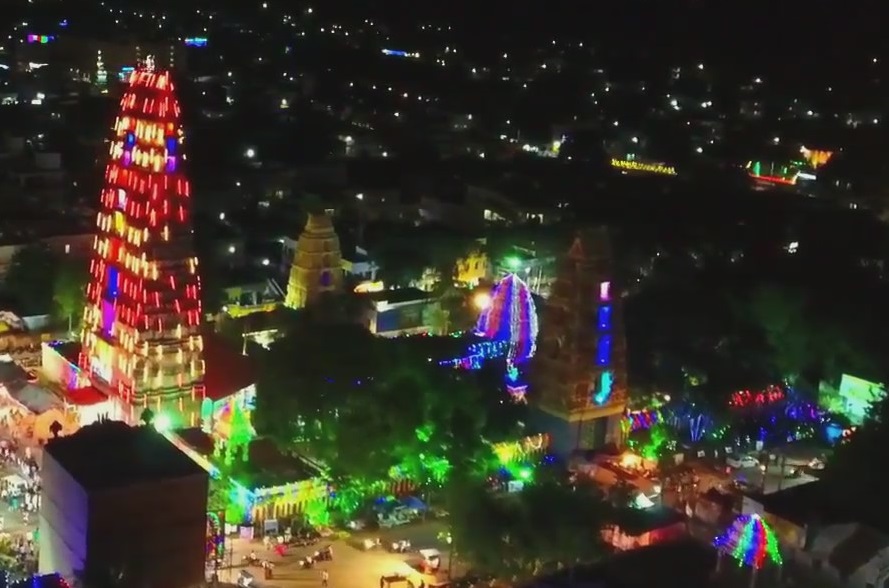
మంగళగిరి శ్రీ లక్ష్మి నరసింహ స్వామి మందిరము (దిగువ సన్నిధి)
మంగళగిరి శ్రీ లక్ష్మి నరసింహ స్వామి మందిరము (దిగువ సన్నిధి)
మంగళగిరి శ్రీ లక్ష్మి నరసింహ స్వామి మందిరము (యెగువ సన్నీది నుండి దిగువ సన్నిధి)
మంగళగిరి శ్రీ లక్ష్మి నరసింహ స్వామి మందిరము (దిగువ సన్నిధి గోపురం)
మంగళగిరి శ్రీ లక్ష్మి నరసింహ స్వామి మందిరము (రథోత్సవం)
మంగళగిరి శ్రీ లక్ష్మి నరసింహ స్వామి మందిరము (రథోత్సవం)
Mangalagiri – The Auspicious Hill
- Mangalagiri means The Auspicious Hill
- This place is one of the 8 important Mahakshetrams (sacred places) in India. The eight places where Lord Vishnu manifested himself are (1) Sri Rangam (2) Srimushnam (3) Naimisam (4) Pushkaram (5) Salagamadri (6) Thothadri (7) Narayanasramam (8) Venkatadri. Thotadri is the present Mangalagiri
- Lakshmi Devi has done tapas on this hill. That’s why it got this name (The auspicious hill)
- There are three Narasimha Swamy temples in Mangalagiri. One is Panakala Narasimha Swamy on the hill
- Another one is Lakshmi Narasimha Swamy at the foot of the temple
- Third one is Gandala Narasimha Swamy at the top of the hill
Panakala Narasimha Swamy – God Who Drinks Panakam
- It is said that here, god is self-existent
- In the temple, there will be no statue of the god, but there is only mouth, widely opened to 15 cms
- The mouth is covered by metal face of the god
- The temple will be opened till afternoon only, with the belief that devatas will perform pujas in the night
- The God takes jaggery water as offering by a conch
- The Jaggery water is actually poured into the mouth of the Lord, a gargling sound is clearly audible as if the Lord is actually drinking it and the sound becomes shriller and shriller as and when the Lord is drinking
- The sound will come to a stop after sometime and the balance of the jaggery water is thrown out
- This phenomenon happens not once in a day but is a recurring feature during the course of the day as and when devotees offer panakam (jaggery water)
- It will be interesting to note that even a single ant is not traceable near the Lord nor around the temple in spite of the offering of so much jaggery water
- As the offering of the panakam to the Lord is peculiar, the Lord here is called panakala Narasimhaswamy
- There is a legend about the offering of the panakam (jaggery water) to the Lord. It is said that the hill was once a volcano
- Sugar or jaggery water, it is said, neutralizes sulphur compounds found in a volcano and prevents a volcanic eruption
- Behind the temple there is the temple of Sri Lakshmi, to the west of which there is a natural cave
- It is believed that it will lead to Undavalli caves on the banks of the Krishna river and the sages used to go to take bath in Krishna River. Now, the cave is very dark and the way could not be seen
SRI LAKSMI NARASIMHA SWAMY TEMPLE
- At the foot of the hill, there is another temple whose origin is traced to the time of Yudhishtira, the eldest of the pandavas
- Yudhishtira is said to be the founder of the chief image of this temple and the deity here is called Sri Lakshmi Narasimha Swamy
- In Vijayawada itself, which is 8 miles from Mangalagiri there is a hill called Indrakeeladri in which Arjuna is said to have done tapascharya (penance) in order to obtain the weapon Pasupata from Lord Siva
- About 200 years back Raja Vasireddy Venkatadri Naidu who ruled from Amaravati as his capital constructed a stupendous gopuram (tower) on the eastern gate of the Lakshmi Narasimhaswamy
- It is one of the highest gopurams in South India and only one of its type in this part of India. It is 153ft. in height and 49 feet wide with 11 storeys, and gates facing east and west
- This great and imposing tower dwarfs the central shrine
- The devoted patience of thousands of skilled craftsmen and the labour of many more apprentices which had gone into this great structure is a testimony to the religious fervour which characterized the builder
- After constructing the gopuram, it was leaning towards one direction
- The Kancheepuram Architects suggested to dig a tank opposite to the tower. After digging the tank, it is said that, the tower became straight
Gali Gopuram (Tower)
- Thoorpu Gali Gopuram (Tower on East Side) is the main attraction for the Lakshmi Narasimha Swamy temple
- Vijayanagara kings constructed three storeys and Raja Vasireddy Venkatadri Naidu constructed another 8 storeys
- Raja Vasireddy constructed this from 1807 to 1809. Height of this temple is 153 feet and width is 49 feet
- It is very rare to find out towers which have less width, and more height like this tower. Utthara Gali Gopuram (Tower on North Side) is opened on the Vaikunta Ekadasi (Mukkoti) day
- It was constructed by Rangapuram Jamindar Madapati Venkateswararao in 1911
- When Padamati Gali Gopuram (Tower on West Side) was being constructed, accidentally some stones fell down and some workers died
- By this incident, the work was stopped and had not been started till now. Dhakshina Gali Gopuram (Tower on South Side) was renovated in 1992 for Krishna pushkaras
